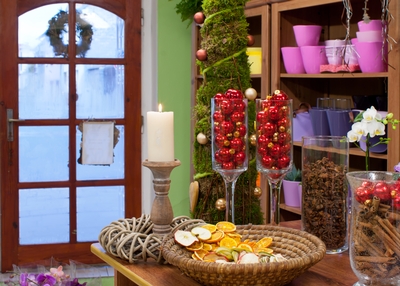‘Tis the season for merchandising.
 Everywhere, offline and online, retailers are ready for the Black Friday/Cyber Monday onslaught. In addition to marketing the right products at right prices, stores have figured out their flows … and we don’t mean in the Zen sense.
Everywhere, offline and online, retailers are ready for the Black Friday/Cyber Monday onslaught. In addition to marketing the right products at right prices, stores have figured out their flows … and we don’t mean in the Zen sense.
Since nearly 90 percent of the world’s population is right-handed (and right-footed), carefully designed store trails lead shoppers to turn right, face an aspirational lifestyle display, then continue at 45 degree angles to find stuff. Wide aisles invite us to walk quickly to our destination; narrow, encourage browsing. [And clogged? No one we know would stay long in that store.] And a well-lit back of the store offers chances for leisurely looking – and much higher price tags.
Other retail strategies are well documented. Like the shrewd placement of impulse buys (the trendier tchotkes) at the cash register or front counter. Or attractive window displays with our fave four-letter word … that would be “sale.” And most definitely, salespeople with smiles who do not ask “how can I help you?”
Holidays are, truly, the best times to be studying retail. More than random facts and figures, though, are the learnings to be reaped. Especially for communicators and designers who need to capture the same sort of attention insiders and outsiders lavish on gift-giving and the spirit.
For one, think hard about the paths you provide folks to find your content: Not too open, not too closed. Wide aisles, in our universe, equate to a lack of detail and description. Whereas, narrow walkways, targeted to the right populaces, will lead to the appropriate info … and rewards.
Two: Cue ‘em. Visuals at every point in the journey lure, supplying audiences the crumbs needed to pursue content or collaboration or activities. [Most of us, when faced with unfamiliarity, prefer clear directions.]
Third (and, yes, there’s more … we’ll beg you to continue this analogy) is understanding our audiences’ EQs enough to not hover, to not fawn, to not be obsequious, but to instead offer guidance and advice while all are finding their ways.
And yes, all good excuses for our continuing to practice visual (and retail) therapy.
